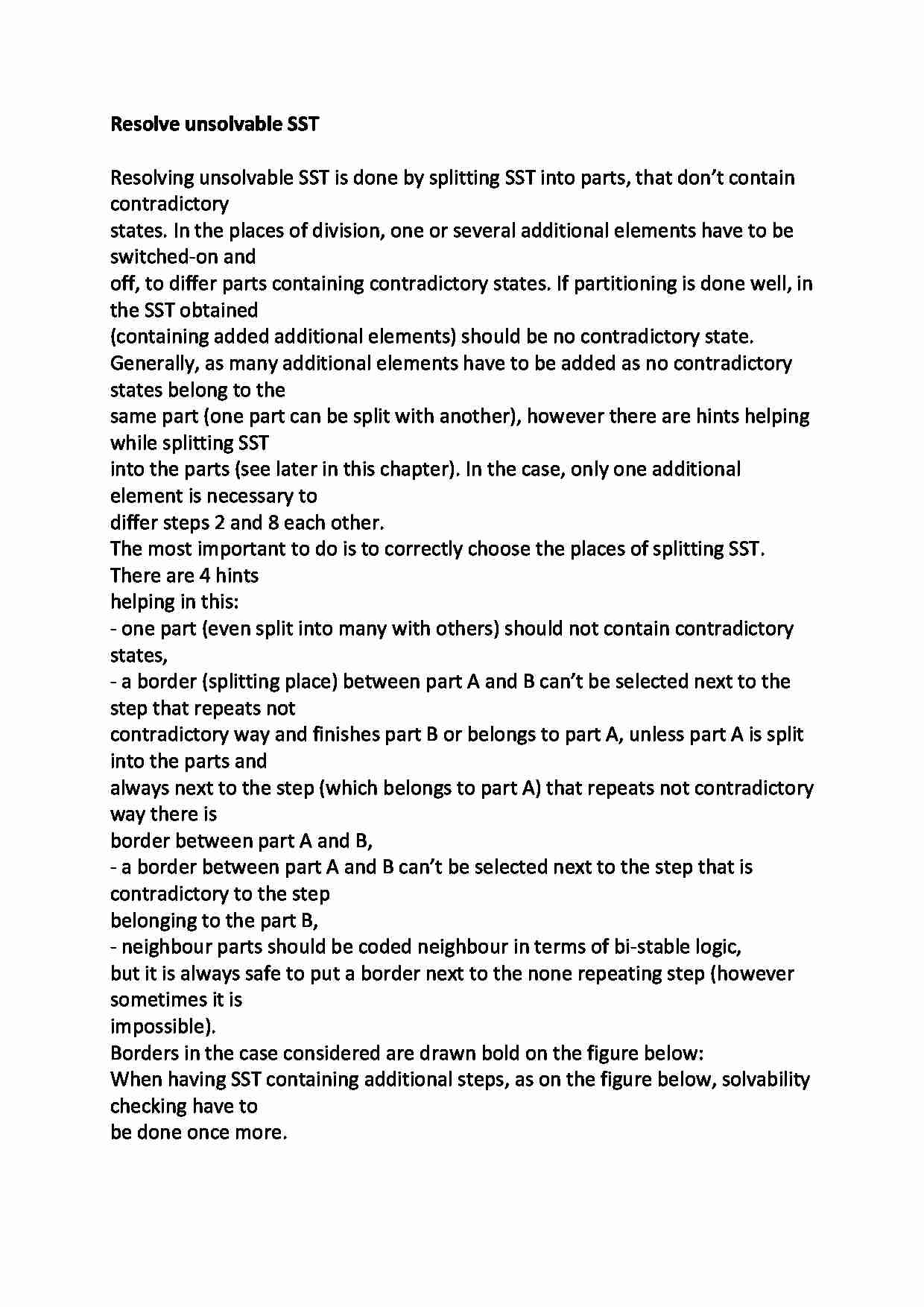To tylko jedna z 2 stron tej notatki. Zaloguj się aby zobaczyć ten dokument.
Zobacz
całą notatkę


Resolve unsolvable SST Resolving unsolvable SST is done by splitting SST into parts, that don't contain contradictory
states. In the places of division, one or several additional elements have to be switched-on and
off, to differ parts containing contradictory states. If partitioning is done well, in the SST obtained
(containing added additional elements) should be no contradictory state.
Generally, as many additional elements have to be added as no contradictory states belong to the
same part (one part can be split with another), however there are hints helping while splitting SST
into the parts (see later in this chapter). In the case, only one additional element is necessary to
differ steps 2 and 8 each other.
The most important to do is to correctly choose the places of splitting SST. There are 4 hints
helping in this:
- one part (even split into many with others) should not contain contradictory states,
- a border (splitting place) between part A and B can't be selected next to the step that repeats not
contradictory way and finishes part B or belongs to part A, unless part A is split into the parts and
always next to the step (which belongs to part A) that repeats not contradictory way there is
border between part A and B,
- a border between part A and B can't be selected next to the step that is contradictory to the step
belonging to the part B,
- neighbour parts should be coded neighbour in terms of bi-stable logic,
but it is always safe to put a border next to the none repeating step (however sometimes it is
impossible).
Borders in the case considered are drawn bold on the figure below:
When having SST containing additional steps, as on the figure below, solvability checking have to
be done once more.
When SST is still unsolvable it means that incorrect border places were selected, and this step of
solution have to be done again for correct border places. In the case SST is solvable.
... zobacz całą notatkę




Komentarze użytkowników (0)